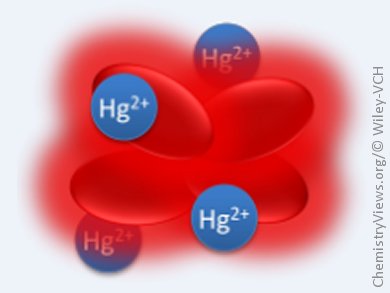The development of efficient luminescent materials in the aggregated or solid state is a topic of current interest on account of their potential applications in the fields of electronics, optics, biological sciences, and as simple sensors for the presence of toxic heavy-metal ions, such as Hg2+. However, although fluorescent materials are highly emissive in the solution state, they become weakly emissive or even non-emissive when aggregated in the condensed phase. This aggregation-caused quenching (ACQ) effect has significantly limited the high-tech application of conventional fluorophores.
In 2001, Ben Zhong Tang, Hong Kong University of Science & Technology, and colleagues observed the phenomenon of aggregation-induced emission (AIE) in some propeller-shaped molecules that is the exact opposite of the ACQ effect [1].
Tang and colleagues now report a simple strategy to tune the emission behavior of a tetraphenylethene (TPE)-functionalized benzothiazolium salt (TPEBe–X). All the TPEBe–X luminogens showed faint red emission in solution, but by varying the counteranion from I– to ClO4– or PF6–, TPEBe–X changed its emission behavior from ACQ to AIE.
Addition of Hg2+ into the aqueous solution of TPEBe–I enhanced the light emission 80-fold; this result suggests that this salt could make an excellent fluorescent Hg2+ sensor with high sensitivity and selectivity.
The sensing process can also be performed in a solid film with a detection limit of 1 μM, thereby demonstrating the use of AIE compounds for Hg2+ detection in real-world conditions and opening a new way to detect Hg2+ in aqueous solution based on the AIE mechanism.
- Effect of the Counterion on Light Emission: A Displacement Strategy to Change the Emission Behaviour from Aggregation-Caused Quenching to Aggregation-Induced Emission and to Construct Sensitive Fluorescent Sensors for Hg2+ Detection,
Na Zhao, Jacky W. Y. Lam, Herman H. Y. Sung, Hui Min Su, Ian D. Williams, Kam Sing Wong, Ben Zhong Tang,
Chem. Eur. J. 2013.
DOI: 10.1002/chem.201303251
[1] J. Luo, Z. Xie, J. W. Y. Lam, L. Cheng, H. Chen, C. Qiu, H. S. Kwok, X. Zhan, Y. Liu, D. Zhu, B. Z. Tang, Aggregation-induced emission of 1-methyl-1,2,3,4,5-pentaphenylsilole, Chem. Commun. 2001, 1740–1741. DOI: 10.1039/B105159H



